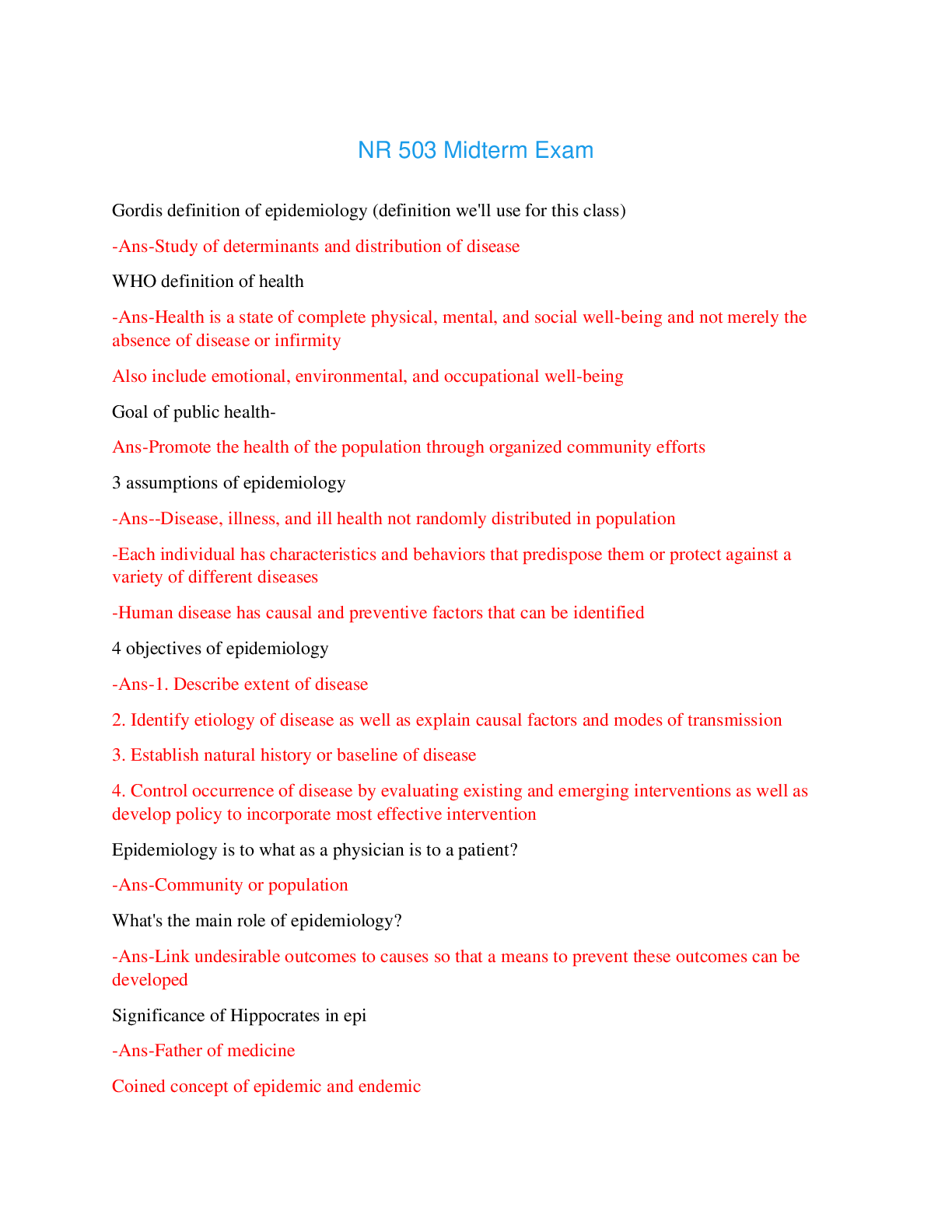NCLEX Question Trainer Test 1 Real Exam Questions & Answers, Rated A+
Document Content and Description Below
NCLEX Question Trainer Test 1 Real Exam Questions & Answers, Rated A+,The nurse is caring for clients in the outpatient clinic. Which of the following messages should the nurse return FIRST? 1. A mo... ther reports that the umbilical cord of her five-day-old infant is dry and hard to the touch. 2. A mother reports that the "soft spot" on the head of her four-day-old infant feels slightly elevated when the baby sleeps. 3. A mother reports that the circumcision of her 3-day-old infant is covered with yellowish exudate. 4. A father reports that he bumped the crib of his two-day-old infant and she violently extended her extremities and returned to them their previous position. - 2 The parents of a child with hemophilia want to know the cause of the disease. Which of the following would be the BEST response by the nurse? 1. "The father transmits the gene to his son." 2. "Both the mother and the father carry a recessive trait." 3. "The mother transmits the gene to her son." 4. "There is a 50% chance that the mother will pass the trait to each of her daughters." - 3 A six-month-old is brought to the clinic for a well-baby check-up. During the exam, the nurse should expect to assess which of the following? 1. A pincer grasp. 2. Sitting with support. 3. Tripling of the birth weight. 4. Presence of the posterior fontanelle. - 2 A 48-year-old man with an endotracheal tube needs suctioning. Which of the following statements is an accurate description of how the nurse should perform the procedure? 1. Insert the suction catheter four inches into the tube. Apply suction for 30 seconds, using a twirling motion as the catheter is withdrawn. 2. Hyperoxygenate the client and then insert the suction catheter into the tube. Suction while you remove the catheter using a back and forth motion. 3. Explain the procedure to the patient. Insert the catheter while gently applying suction, and withdraw using a twisting motion. 4. Insert the suction catheter until resistance is met, then withdraw it slightly. Apply suction intermittently as the catheter is withdrawn. - 4 A 47-year-old woman comes to the outpatient psychiatric clinic for treatment of a fear of heights. The nurse knows that phobias involve 1. projection and displacement. 2. sublimation and internalization. 3. rationalization and intellectualization. 4. reaction formation and symbolization - 1 The prenatal client at eight-weeks gestation has a positive VDRL. In preparing the teaching plan, which of the following would be MOST appropriate for the nurse to include? 1. The importance of not taking any medications so as not to damage the fetus. 2. Instructing the client on the importance of taking the penicillin for the prescribed time. 3. Instructing the client to refrain from sexual activity. 4. Maintaining the confidentiality of sexual partners or contacts. - 2 An elderly client who has been recently immobilized is ordered to begin passive range-of-motion (ROM) exercises. What should the nurse understand about ROM before initiating this order? 1. Passive range-of-motion exercises increase muscle strength. 2. A full range of motion must be completed for the elderly client. 3. Exercises should be completed to the point of discomfort. 4. A sufficient range of motion assists the elderly to carry out activities of daily living (ADLs). - 4 A 65-year-old man is scheduled for a colon resection this morning. Last night he had polyethylene glycolelectrolyte solution (GoLytely) and a soapsuds enema. This morning he passes a medium amount of soft, brown stool. The nurse should know that this 1. indicates that the bowel preparation is incomplete. 2. is evidence that the patient ate something after midnight. 3. is an expected finding before this type of surgery. 4. is the last stool that was left in the colon. - 1 The nurse cares for a newborn infant with fetal alcohol syndrome. The nurse would expect to see which of the following physical characteristics? 1. An infant that is large for gestational age (LGA) with craniofacial abnormalities and hydrocephalus. 2. An infant with a small head circumference, low birth weight, and undeveloped cheekbones. 3. An infant with a small head circumference, low birth weight, and excessive rooting and sucking behaviors. 4. An infant with a normal head circumference, low birth weight, and respiratory distress syndrome. - 2 The physician orders hydromorphone hydrochloride (Dilaudid) 15 mg IM for a 56-year-old woman. Side effects of this medication that the nurse should observe the patient for include 1. photosensitivity and constipation. 2. hypotension and respiratory depression. 3. tardive dyskinesia and diplopia. 4. dry mouth and tinnitus. - 2 [Show More]
Last updated: 4 days ago
Preview 1 out of 19 pages
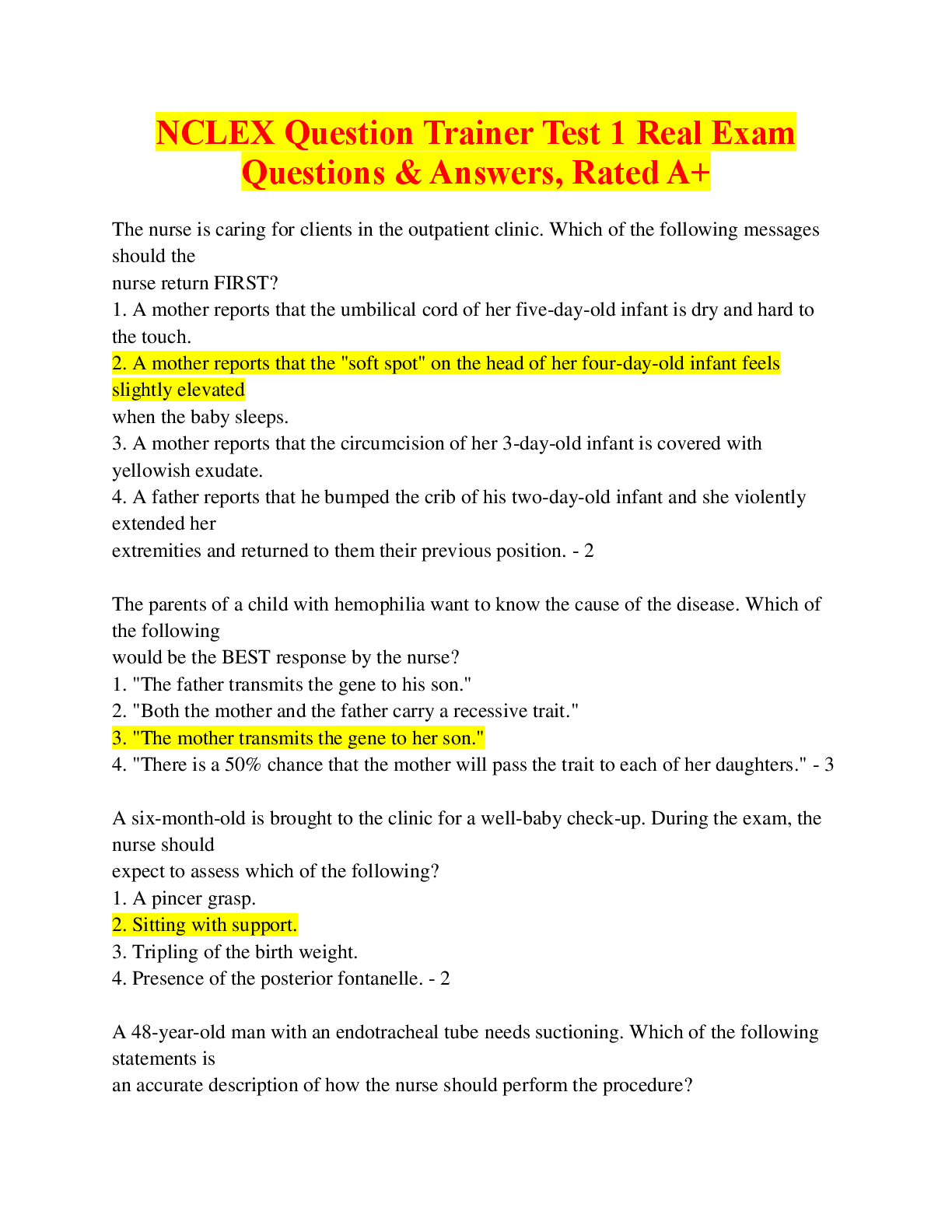
Buy this document to get the full access instantly
Instant Download Access after purchase
Buy NowInstant download
We Accept:

Reviews( 0 )
$14.50
Can't find what you want? Try our AI powered Search
Document information
Connected school, study & course
About the document
Uploaded On
Jul 22, 2025
Number of pages
19
Written in
Additional information
This document has been written for:
Uploaded
Jul 22, 2025
Downloads
0
Views
2


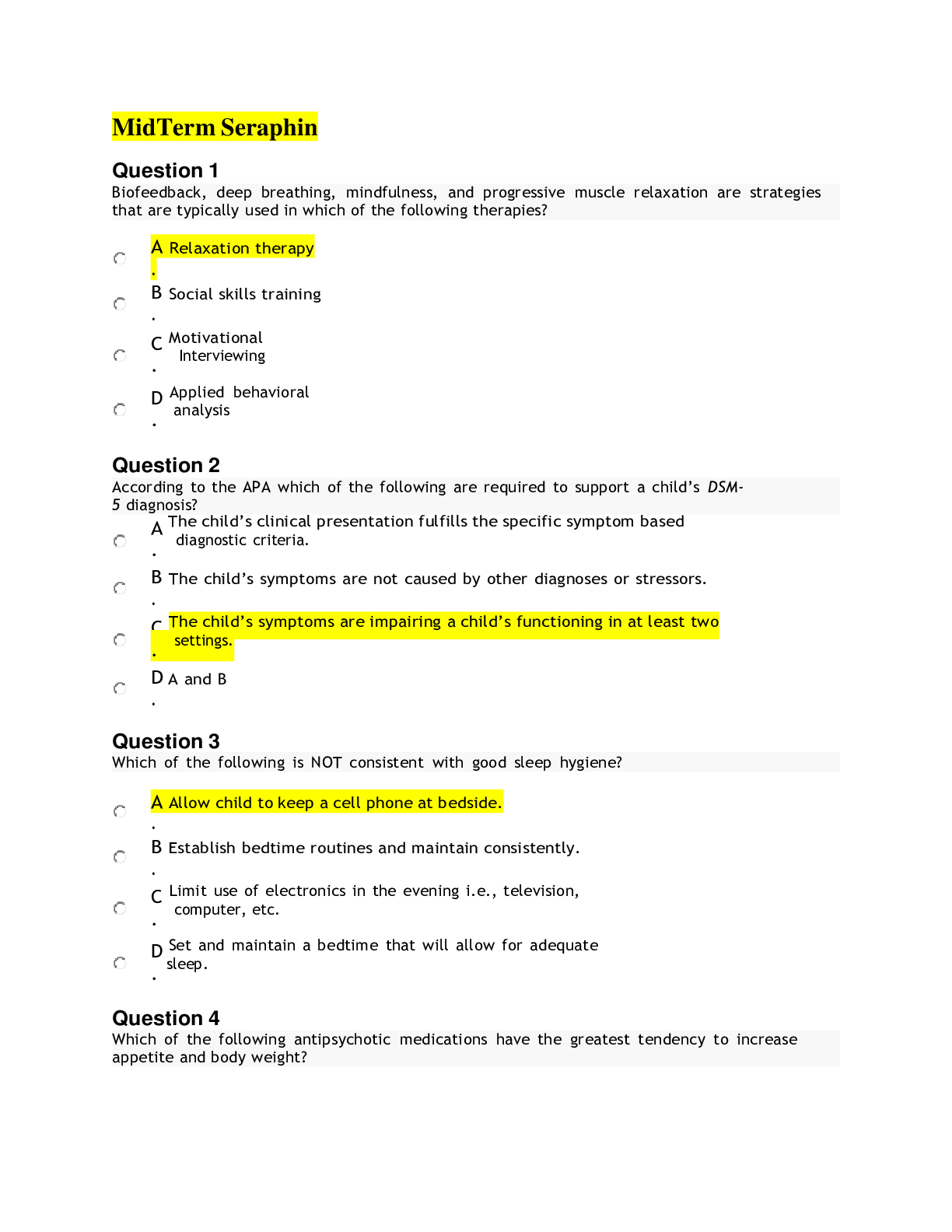
 Pediatrics Practice Exam-Answered.png)
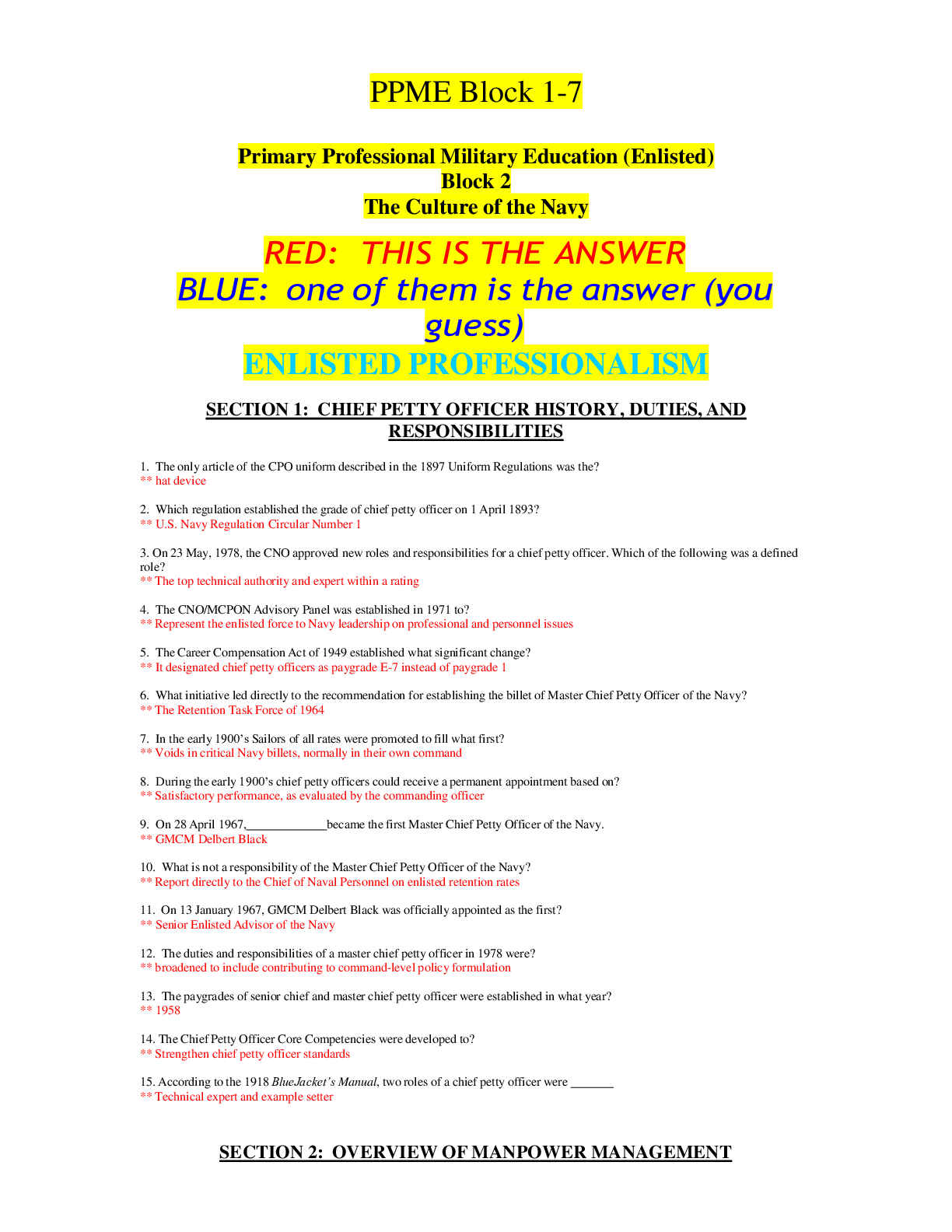


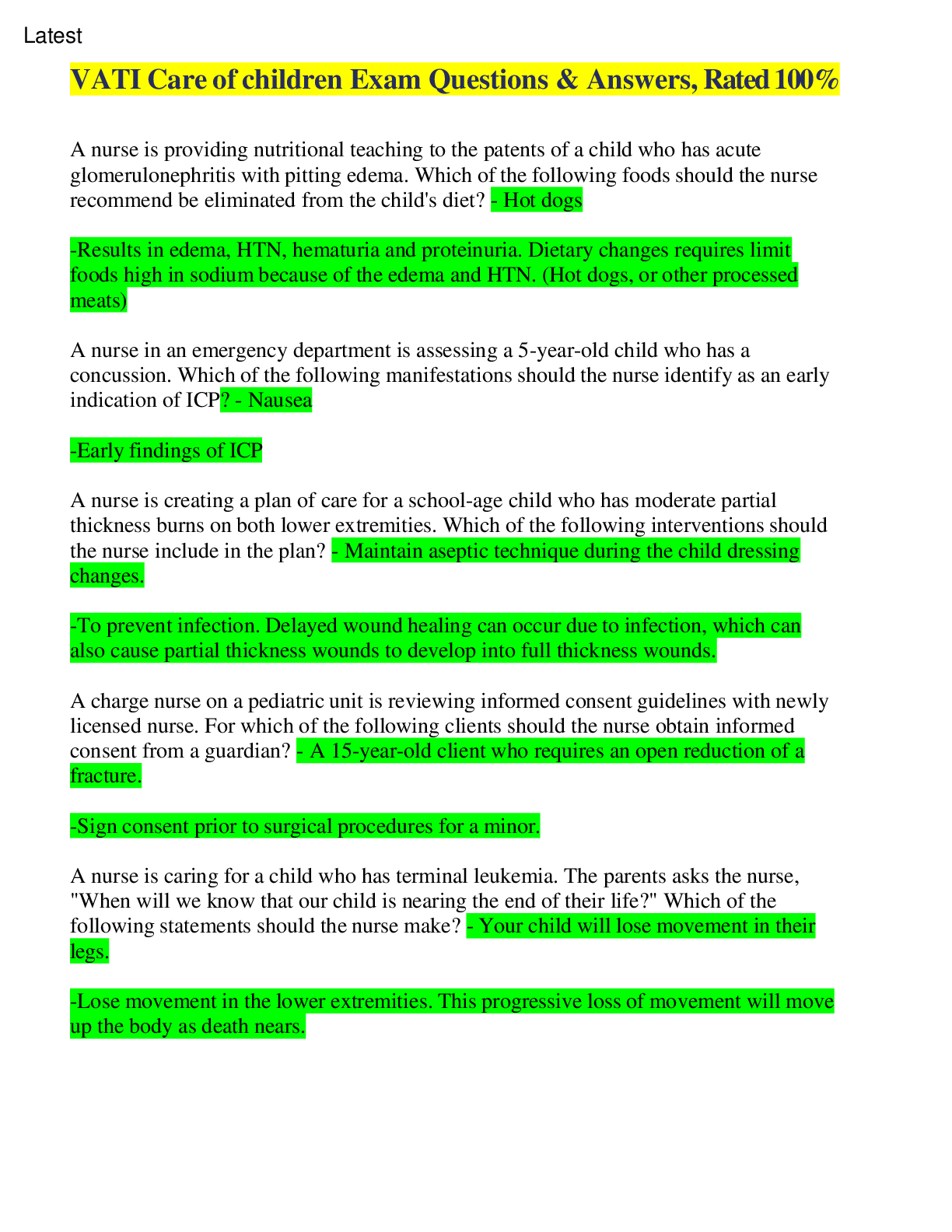
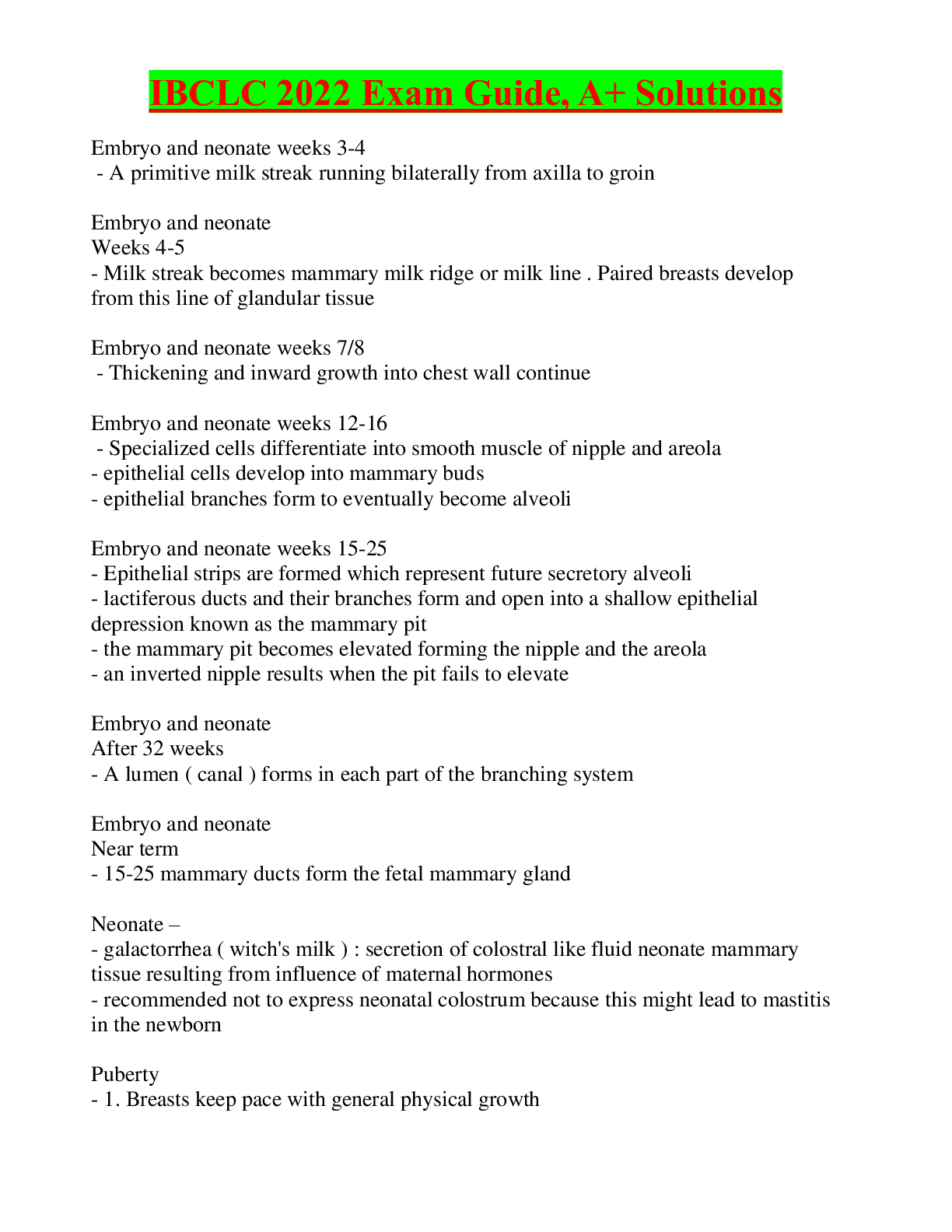
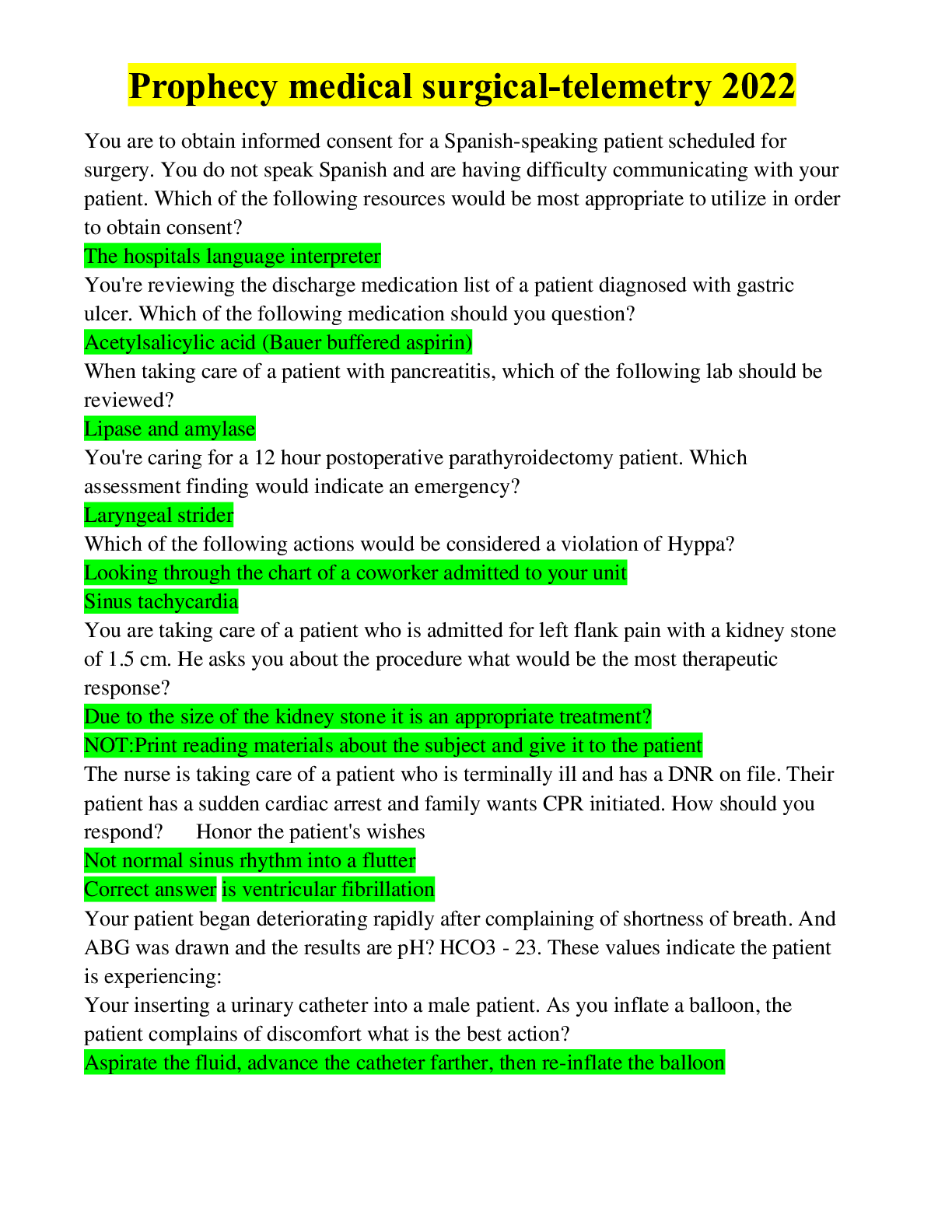
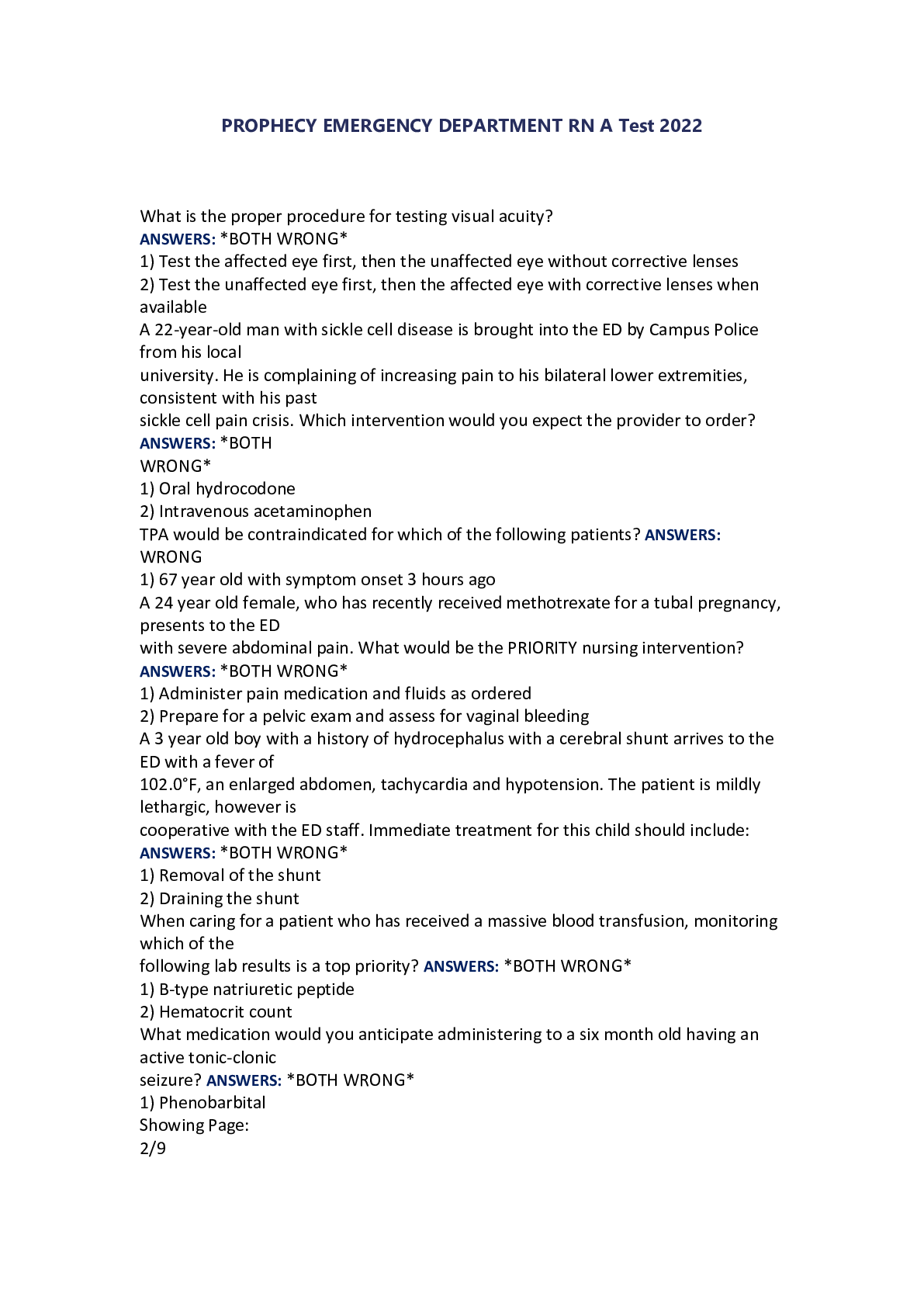
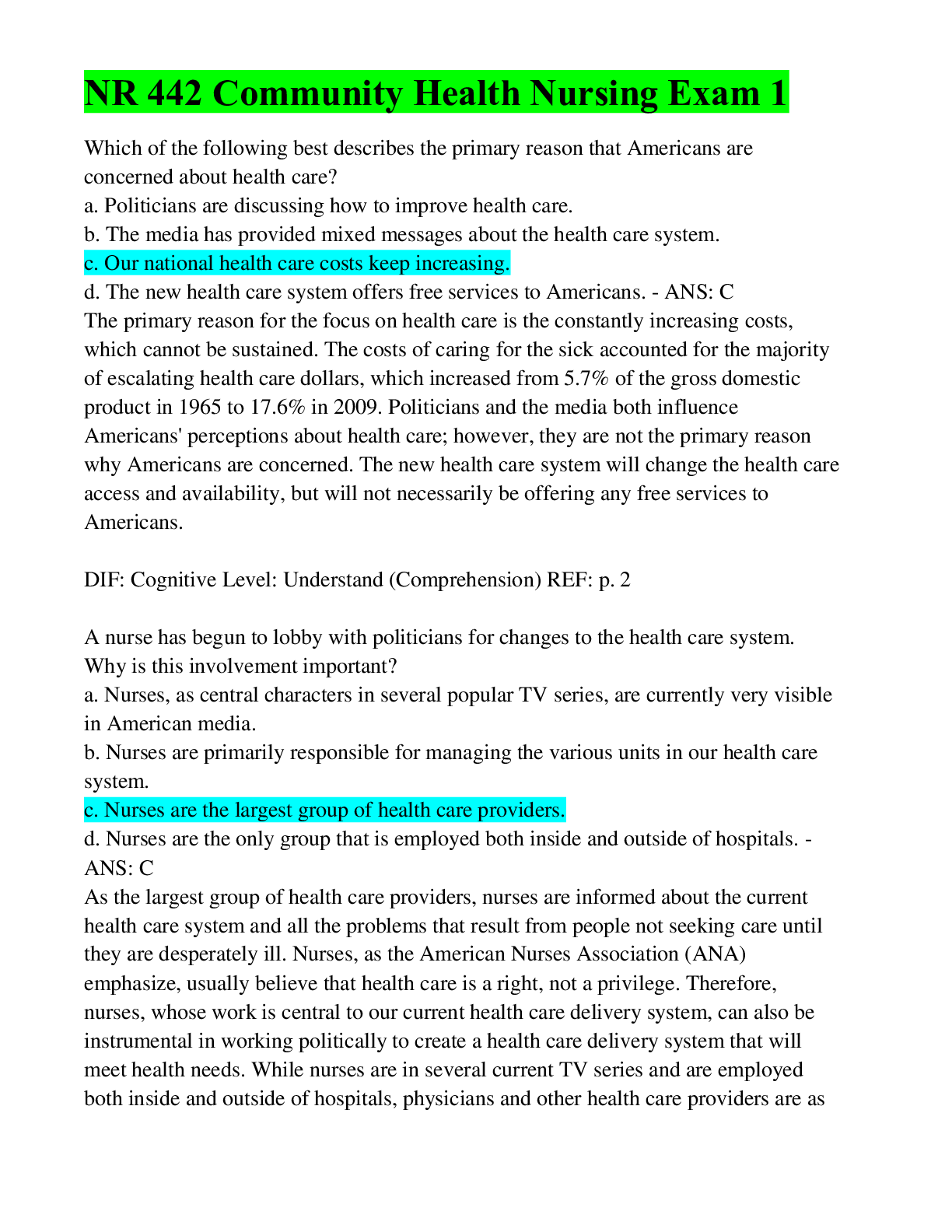



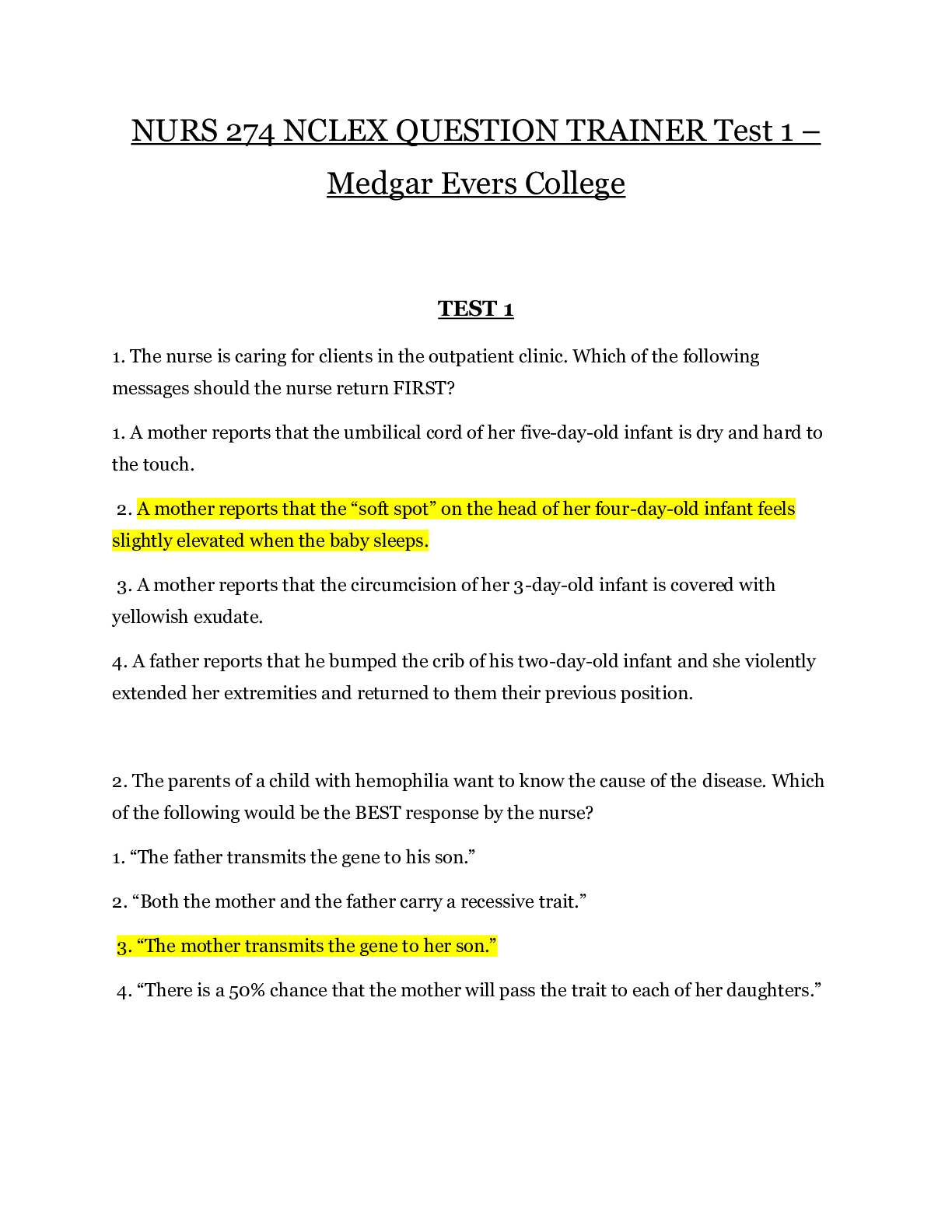
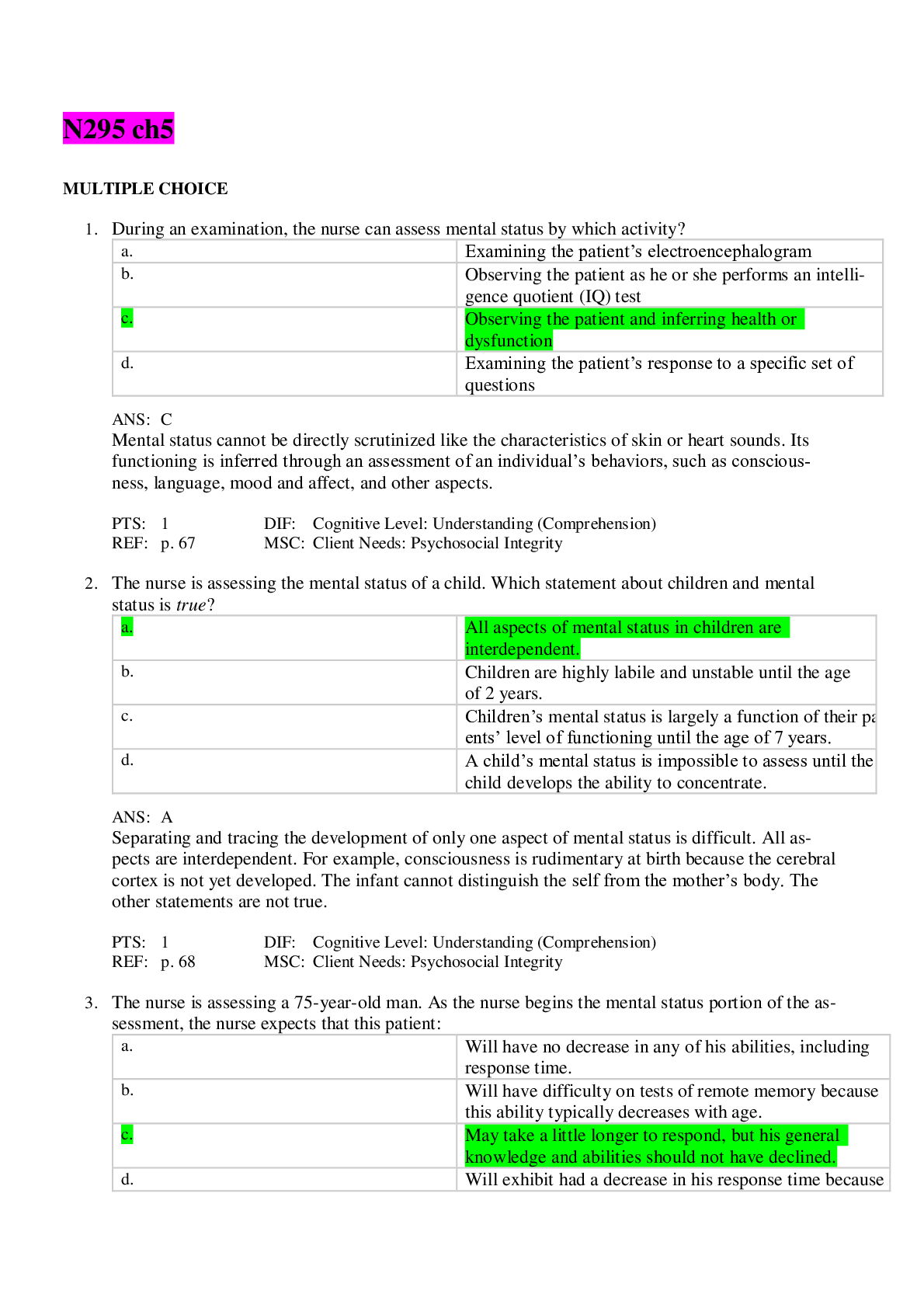
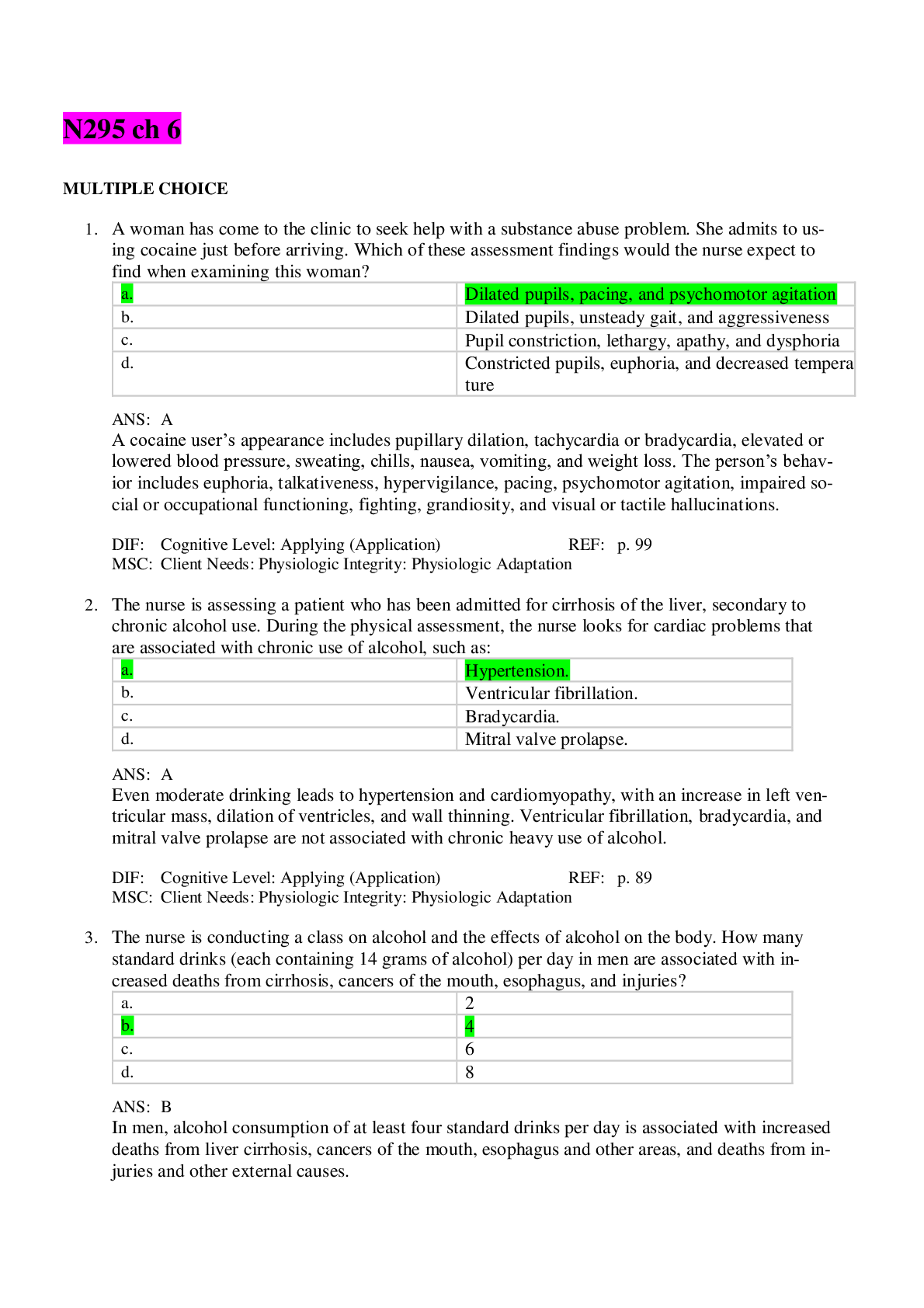
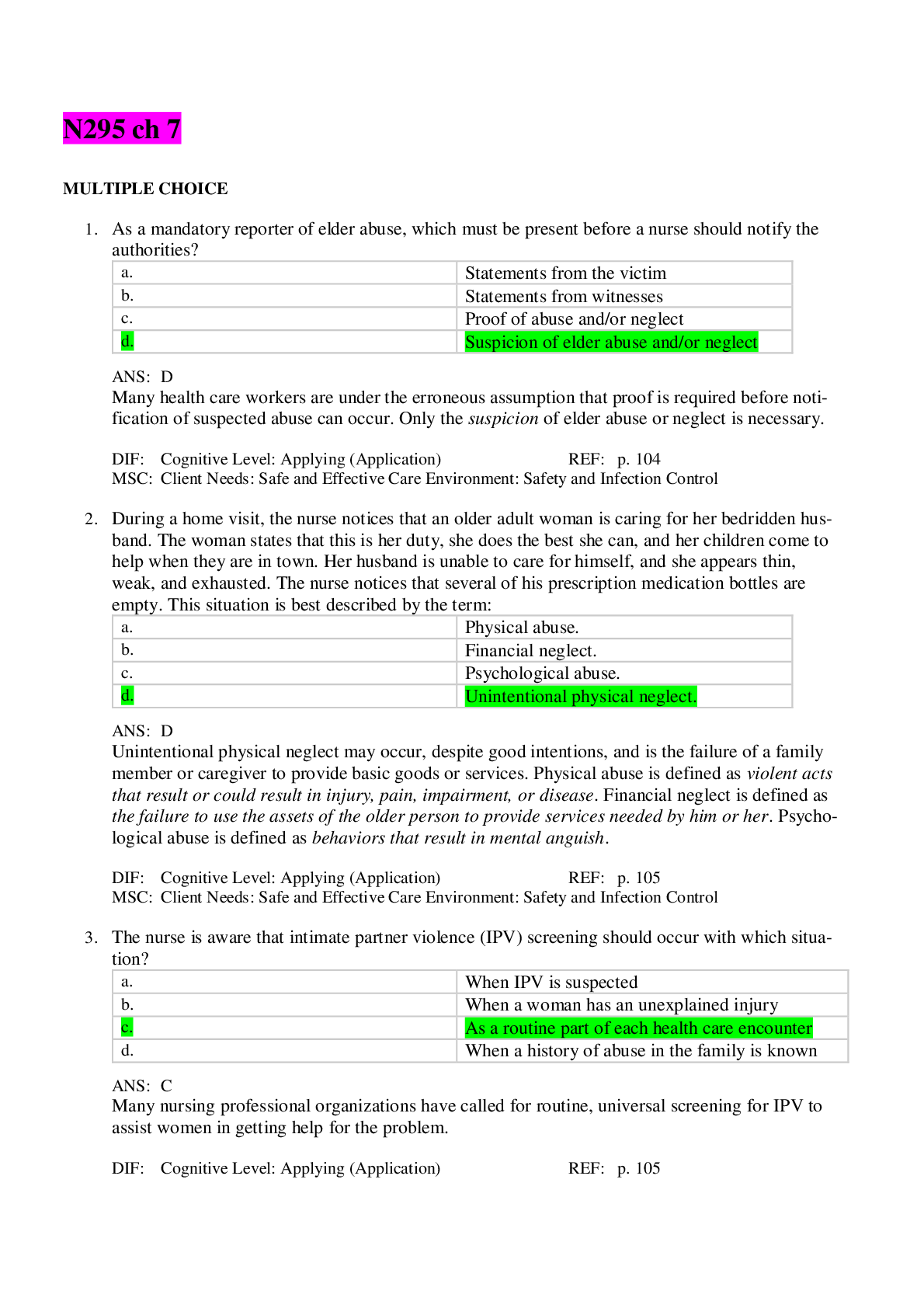


.png)
